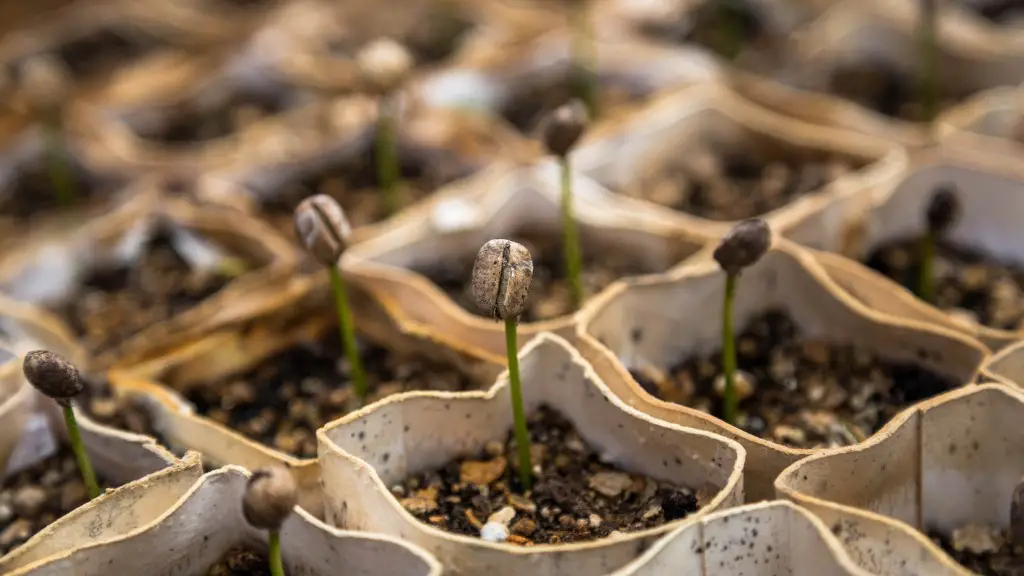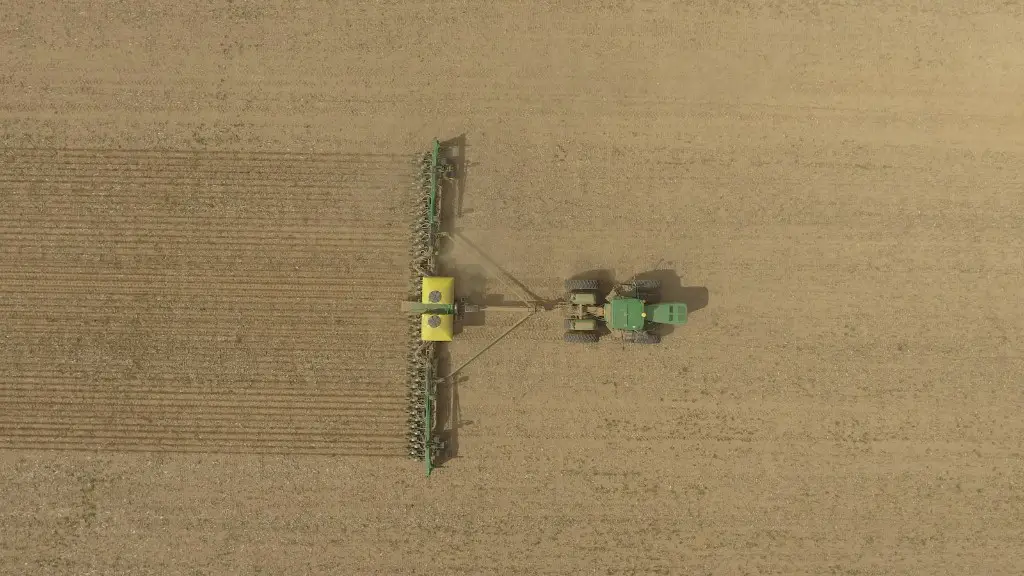Technology transfer in agriculture is a modern movement in the sector which involves the adoption and adaptation of new technologies and processes from one agricultural system to another. Technology transfer is a critical element of agricultural development, modernisation and transformation as it seeks to modify existing production processes, tailor-make products and services, and create new value-adding activities. Technology transfer takes several forms including biotechnology, remote sensing, irrigation, soil management, and post-harvest activities. By using existing technologies and processes, agricultural systems can be structured and developed to be more productive and sustainable.
The primary barriers to agricultural technology transfer are the lack of access to credit and resources and their availability in non-developed countries. The cost of technology is high, and can be prohibitive to start-up farmers. Additionally, many agricultural technologies are not available in the local environment or the farmers lack the necessary information to access them. To overcome these barriers, governments and international development communities need to invest in creating adequate infrastructure for agro-technological systems.
Technology transfer within agricultural systems is essential to increase the productivity and sustainability of farms. Farmers and producers must adapt to the changing conditions in their local environments and make sure their farms are benefiting from the most recent advancements in technology. Improved resource management and crop production technologies can increase yields while minimising the cost of production and meet the new needs of the local producers.
Technology transfer initiatives are an integral part of agricultural development, as they seek to meet the needs of the current global food crisis. To do this, international organisations, public-private partnerships and research organisations are investing in initiatives to improve the productivity and sustainability of agriculture. These initiatives have the potential to reduce poverty, enhance food security and improve incomes for small-scale farmers.
Technology transfer in agriculture also helps to bridge the digital divide between developed and developing countries. Technology helps to facilitate a process of capacity building and knowledge sharing between the two worlds. Through access to the latest technologies, farmers in developing countries are provided with access to the latest information, knowledge and resources needed to increase their yields and improve the livelihoods of their families.
Technology transfer in agriculture is a constantly evolving process and is only expected to grow in importance in the 21st century. As access to technology increases, the opportunities to leverage its benefits are vast. Through effective technology transfer, farmers can gain knowledge, access resources, and improve their livelihoods.
Impact of Technology Transfer on Farmers and Producers
Technology transfer in agriculture can have a major impact on farmers and producers in terms of their access to resources and the quality of their produce. Improved access to resources can lead to increased incomes, improved food security, better health and improved livelihoods. Global markets are highly competitive and the adoption of new technologies and production processes can give farmers and producers an edge over their competitors.
Technology transfer has the potential to bring a positive economic impact to rural communities. The successful diffusion of new technologies can lead to increased farm productivity, reduced cost of production and improved marketing opportunities. Moreover, farmers can benefit from technology remote-monitoring of their farms, improved irrigation systems, better use of water resources, increased soil fertility and better crop management, all of which help in providing better yields and a higher quality of produce.
Adopting the latest technologies can also benefit the environment. By implementing responsible storage and management of resources, farmers can ensure their resources are being used efficiently, which can reduce the emissions of greenhouse gases, air and water pollution and improve the biodiversity of the land.
With rapid advancements in technology, agricultural technology transfer is on an upward trajectory. Technology transfer can have a major impact on farmers and producers by increasing their access to resources and improving the quality of their produce and yields. By leveraging technology to its fullest potential, farmers and producers have a better chance of staying competitive in the global market.
Technology Transfer Frameworks and Policies
In order to make technology transfer a success, governments and international organisations need to create a framework and policy environment that encourages the diffusion of new technologies. This framework and policy environment should be geared towards creating an inclusive system and incentivising the use of new technologies by farmers and producers.
Governments and international organisations need to provide technical assistance and financial aid in order to increase the use of technology. The cost of technology is often prohibitive to farmers and producers, so providing support in these areas can increase the uptake of new technologies. Additionally, creating an environment that supports technology transfer can help to increase the rate of diffusion, improving the prospects of farmers and producers.
Creating a policy environment to support technology transfer is also important. This means providing incentives for small-scale farmers to adopt new technologies, incentivising research and innovation, and providing access to credit and resources. Policy makers also need to be aware of the potential implications of technology transfer on local communities, ensuring that any impacts are beneficial to the local population.
Technology transfer is a critical process that requires the creation of a supportive policy environment and framework. Governments, international organisations and research institutions have an important role to play in making this process a success. By creating policies that are beneficial to small-scale farmers, increasing access to resources, and providing incentives for technology adoption, the prospects for farmers and producers around the world can be greatly improved.
International Cooperation in Technology Transfer
International cooperation is essential in order to make technology transfer a success. Creating a network of stakeholders with the purpose of exchanging information, resources and knowledge can increase the rate of diffusion of new technologies and make the process more efficient.
International organisation such as the United Nations and the World Bank have a key role to play in technology transfer initiatives. These organisations often provide financial and technical support for the diffusion of technology and create global standards for agricultural production. Additionally, research institutions can provide valuable information and access to resources for farmers and producers.
Government agencies from developed countries are also important players in facilitating the diffusion of technology. These agencies often provide financial support for the transfer of technology, provide policy expertise and technical assistance, and create national policies that are conducive to the diffusion of technology. Additionally, agencies from developing countries can provide valuable support for the process.
International cooperation is essential for the success of technology transfer initiatives. By creating networks of stakeholders and providing financial and technical support, international organisations, governments, and research institutions have the potential to create a more efficient process that can benefit farmers and producers around the world.
Developing Nations and Technology Transfer
Technology transfer is especially important in developing countries, where access to resources and technologies is often limited and villages and rural populations have little opportunity to benefit from advancements in technology. In these situations, technology transfer can be a game-changer, providing access to resources and information that would otherwise be difficult or impossible to obtain.
In order for technology transfer to be successful in developing countries, governments, international organisations and research institutions must invest in creating a conducive policy environment and infrastructure for the diffusion of technology. Additionally, governments should consider incentivising technology transfer initiatives, providing technical and financial assistance and committing to increasing access to resources.
In developing nations, technology transfer is especially important for improving the prospects of farmers and producers and helping to reduce poverty. By investing in technology transfer initiatives, governments and international organisations can help to improve the livelihoods of people living in rural areas.
Technology transfer can have a tremendous impact on developing countries, helping to bridge the digital divide and improving the lives of millions of people. In order to make technology transfer a success, governments, international organisations, and research institutions should invest in creating an environment that is conducive to the diffusion of technology.
The Future of Technology Transfer
Technology transfer is set to become even more important in the future as access to technology increases and new advances are made. As technology advances, farmers and producers will have access to a larger range of resources, allowing them to leverage the benefits of technology and stay competitive in the global market.
To ensure the success of technology transfer initiatives in the future, governments and international organisations must continue to invest in creating a conducive policy environment and invest in infrastructure, financial resources and technical capacity. Additionally, research organisations should continue to provide scientific and technical support to ensure the diffusion of new technologies.
In the future, technology transfer is set to become even more important. Governments, international organisations, and research institutions must continue to invest in making this process a success, providing resources and technical capacity for farmers and producers, and creating an environment that encourages technology transfer.





